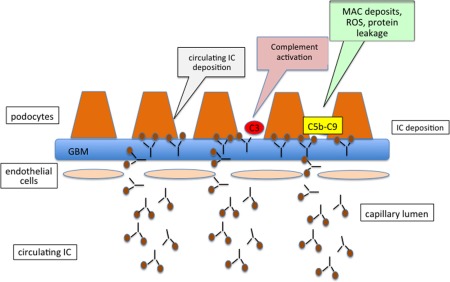Figure 3.

Mechanism of circulating immune complex deposition in membranous nephropathy. Preformed small‐sized circulating immune complexes may traverse the glomerular basement membrane (GBM) and deposit beneath the podocyte. The functional impairment represented by proteinuria is the result of formation of the membrane attack complex (C5b‐C9, MAC), which leads to sublethal podocyte injury resulting in the activation of transcription factors encoding for mediators of fibrosis and cytoskeletal podocyte rearrangement. It also increases production of potentially nephritogenic molecules such as reactive oxygen species (ROS), proinflammatory cytokines, proteases and vasoactive molecules.
